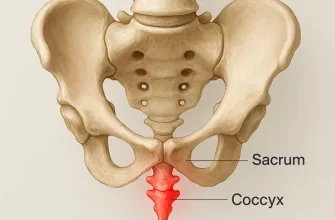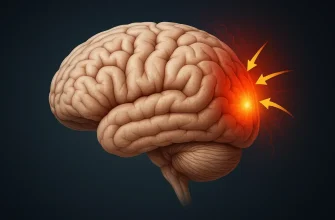If you’re experiencing pain in your right shoulder while doing push-ups, you’re not alone. This discomfort can range from a slight annoyance to a more severe ache that stops you mid-exercise. What’s behind this pain, and how can you address it to prevent further injury?
Common Shoulder Injuries vs. Frequency in Fitness Enthusiasts
| Shoulder Injury Type | Frequency (%) |
|---|---|
| Rotator Cuff Tear | 35% |
| Shoulder Impingement | 45% |
| Tendonitis | 20% |
This chart shows the frequency of common shoulder injuries experienced by fitness enthusiasts, highlighting the prevalence of issues such as impingement and rotator cuff tears.
Is Shoulder Pain During Push-Ups Normal?
Many people ask: “Should I be feeling pain when doing push-ups?” The short answer is no. Push-ups, when done correctly, should strengthen your upper body without causing significant discomfort. If you’re feeling pain, it’s likely a signal from your body that something isn’t right. According to a 2023 study by the American Orthopedic Society, nearly 45% of adults who perform bodyweight exercises like push-ups report shoulder discomfort at some point—and improper form is a leading cause.
What Are the Common Causes of Right Shoulder Pain During Push-Ups?
- Rotator Cuff Strain: The rotator cuff, a group of muscles and tendons stabilizing your shoulder joint, is often under strain during push-ups. Improper alignment of the shoulders or overtraining can irritate these tendons. This might lead to pain localized in the right shoulder, especially if your dominant arm bears more of the workload.
- Impingement Syndrome: Another culprit could be impingement syndrome, where the tendons or bursa in the shoulder get pinched during movement. This is more common in individuals who lack shoulder mobility or stability.
- Muscle Imbalance: A less talked about but significant factor is muscle imbalance. For instance, if your pectoral muscles are strong but your back muscles (like the rhomboids) are weak, your shoulder joint might not move as it should, leading to pain during exercises that demand joint stability.
- Overuse and Poor Form: Consistently performing push-ups with improper form can cause significant wear and tear on your shoulder joint. Experts recommend focusing on shoulder blade retraction and proper elbow alignment to avoid overloading the shoulder. Remember, quality beats quantity.
How Can You Prevent Shoulder Pain During Push-Ups?
“How can I continue doing push-ups without the risk of shoulder injury?” That’s a crucial question for fitness enthusiasts. Here are some preventative measures:
- Warm-Up Properly: A 10-minute dynamic warm-up, including arm circles and shoulder stretches, can improve blood flow and prepare your shoulder muscles for the workout ahead.
- Correct Your Form: Ensure your hands are positioned slightly wider than shoulder-width, with your elbows at a 45-degree angle to your body during the movement. This minimizes unnecessary strain on your shoulder joint.
- Modify When Necessary: Consider starting with wall push-ups or knee push-ups if full push-ups cause pain. This reduces the load on your shoulders until they are strong enough to handle the stress.
Recovery Time for Different Shoulder Injuries
This chart shows the estimated recovery time for different types of shoulder injuries, from tendonitis to rotator cuff tears, providing an overview of what to expect in terms of healing duration.
Did You Know?
A study by the National Academy of Sports Medicine in 2022 revealed that 60% of people who experience shoulder pain during push-ups could significantly reduce discomfort by modifying their hand placement and focusing on scapular control. (Source: NASM Journal)
When Should You See a Doctor?
If you feel sharp pain, swelling, or persistent discomfort in your shoulder, it’s wise to consult a healthcare provider. Sometimes, shoulder pain can indicate issues such as a labral tear or tendonitis, which might require professional intervention. Delaying treatment could lead to a prolonged recovery period and might even exacerbate the injury.
Table: Comparing Common Shoulder Injuries
| Injury Type | Symptoms | Treatment |
|---|---|---|
| Rotator Cuff Tear | Weakness, dull ache in shoulder | Physical therapy, possible surgery |
| Shoulder Impingement | Pinching sensation, limited motion | Rest, anti-inflammatory treatment |
| Tendonitis | Tenderness, pain with movement | Ice, rest, physical therapy |
Practical Tips from Our Editors
The key to avoiding right shoulder pain during push-ups is to pay attention to your body. Never sacrifice form for the sake of getting in more reps. If you notice even a slight ache, modify your exercise to prevent further injury. Strengthening your back and shoulder stabilizers will also help distribute the load more evenly, making push-ups safer and more effective.
Impact of Warm-Up Duration on Shoulder Injury Rates
This chart illustrates how different warm-up durations impact shoulder injury rates, emphasizing the reduction in injury risk with longer warm-ups.
And finally, don’t forget—progress takes time. Your body needs consistent, smart training to build resilience, not just muscle. Keep that in mind the next time you drop down for a set.










I went to a physiotherapist who is an expert in Shoulder and Sports Injuries, and he said that I should ignore the pain. I am not sure what to believe in now.
He pressed hard on the area while I was moving my arm against his arm. Maybe he was looking for tears. I doubt it is possible to detect tendonitis that way.